Introduction
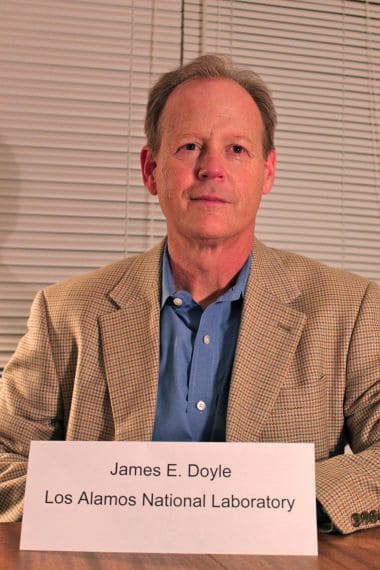
Courtesy of James Doyle
James E. Doyle’s ordeal with Washington began one morning in early February last year, when his supervisor stopped by his desk at Los Alamos National Laboratory and told him that senior managers wanted copies of all his publications.
The 55-year-old political scientist asked the reason for the request, and he eventually was told that someone at the House Armed Services Committee wanted to see the publications. But Doyle said officials refused to tell him who it was or why.
Later that day at the lab’s New Mexico campus, he said, two members of a Security Inquiries Team abruptly arrived with a special, silver-colored briefcase for secure documents, and pulled out an article he published a few days earlier on the website of a London nonprofit group.
They claimed that the article, an impassioned critique of the political theories undergirding the nuclear arms race and a defense of President Obama’s embrace of a nuclear weapons-free future, contained classified information.
The assertion astonished Doyle, since the laboratory’s security authorities had already reviewed the article and declared it unclassified. But it was the start of a series of events in which Doyle first had his pay docked and his security clearance withdrawn, and then eventually was fired.
He got that final news last month — on July 8, a day after the Center for Public Integrity asked the Energy department’s National Nuclear Security Administration, which runs the nation’s nuclear labs, about the dispute over his article. “I was shocked,” he said, shortly afterward. “I am still shocked.”
Experts say Doyle’s treatment raises questions about the commitment of the nuclear weapons labs — which face increased competition for resources amid declining military interest in their key product — to intellectual independence in their workforce. Top lab and Energy Department officials have responded to the case by urging that all writing by their employees on topics related to their work be subjected to pre-publication review, even when written on their own time.
Doyle, officially a contractor, said he was told that he was being let go as part of a program of layoffs at the New Mexico lab. But he says he believes the sudden firing was instead part of a Washington-inspired campaign of retribution for his refusal to stay on message and support the lab’s central mission, namely its continued development and production of nuclear arms, at a cost of almost $2 billion per year there.
“Classification has been used against me for the purposes of censorship of the article and retaliation against me for writing the article,” said Doyle, who is now looking for work with two children in college and another headed there.
Los Alamos officials did not respond to several requests for an interview with an official who could discuss the case. Derrick Robinson, a spokesman for the Energy department’s National Nuclear Security Administration, which oversees Los Alamos, said he was seeking official comment. But none was received by the time of publication.
Doyle’s treatment has nonetheless already attracted criticism from former Obama appointees and from his editor at Survival, a journal published by the International Institute for Strategic Studies where the article appeared in February 2013.
“It sure looks like he’s being fired for supporting the President’s policy,” said Jon Wolfsthal, a special adviser on nuclear matters to Vice President Joseph Biden from 2009 to 2012 who knows Doyle.
“It sure looks like he’s being fired for supporting the President’s policy.”
Jon Wolfsthal, special adviser on nuclear matters to Vice President Biden from 2009 to 2012
“Nobody would go after this article on classification grounds unless they were pursuing a political agenda, and it is amazing to attack someone politically for writing an article in support of a policy of the president of the United States,” said Matthew Bunn, a former White House official under President Clinton and now a nonproliferation expert at Harvard’s Kennedy School of Government.
“The classification system, of course, is not supposed to be used for political purposes,” Bunn said. “It is only to prohibit the release of information if it would damage the security of the U.S. And there’s nothing in this article that could in any way damage the security of the United States.”
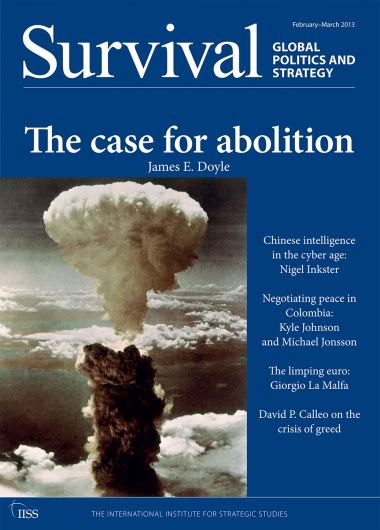
Courtesy of the International Institute for Strategic Studies
Calling nuclear deterrence an outmoded myth
Although Doyle has left Los Alamos, he said in a telephone interview that he cannot discuss the published article that started it all — not even its name or the title of the publication it appears in. Doing so might violate the Laboratory’s nondisclosure agreement pertaining to information it deems classified.
An Energy department Office of Hearings and Appeals decision last month, which dismissed a whistleblower claim Doyle filed over his treatment, also did not name Doyle’s article, in keeping with lab classification rules.
But the Hearings report said it was published in “an international journal” in early February 2013. Doyle’s 8,644-word article, entitled “Why Eliminate Nuclear Weapons,” is the only article Doyle published in an international journal around that time. Its subtitle asserted that “the world must reject the myths and expose the risks of the ideology of nuclear deterrence if it is to meet the challenges of the twenty-first century” — foreshadowing its detailed critique of the nuclear policies supporting most of Los Alamos’ work over the past 71 years.
Doyle, who holds a doctorate in international studies from the University of Virginia, has been at Los Alamos for the past 17 years. Before he joined the lab, he said, he wrote the Department of Energy’s strategic plan for keeping weapons-grade uranium and plutonium stored at hundreds of sites scattered across the former Soviet Union from falling into the wrong hands. He referred to this risky state of affairs as “the babushka-with-uranium-in-the-chicken-shed” problem.
As a nuclear safeguards and security specialist in the lab’s Nuclear Nonproliferation Division, which has 250 employees and an annual budget of about $185 million, Doyle has studied ways to verify reductions in United States and Russian nuclear weapons stockpiles beyond the current levels. He also edited a textbook, Nuclear Safeguards, Security and Nonproliferation: Achieving Security with Technology and Policy, which, he said, is used in three dozen universities in the U.S. and abroad.
To perform his analytical work, Doyle long held a “Q” clearance giving him access to sensitive nuclear weapons-related information, as well as a separate clearance to review secure, compartmented information on foreign nuclear programs. He was trained to classify documents and, he says, for a time wrote the weekly intelligence briefings for the Los Alamos lab director.
Doyle said he worked for months, in his spare time, on the article at the center of the controversy. Since it was not prepared at work, lab rules didn’t require him to submit it for pre-publication classification review, according to a Sept. 26, 2013, internal Los Alamos review of the episode, obtained by the Center. But he did so anyway, “in the spirit of following best practice,” the review said.
He expected it to cause a stir, partly because of management’s reaction to his 2010 article for Defense News proposing that Congress set aside $75 million to $100 million annually for research into new technologies to implement the Obama administration’s ambitious arms reductions goals.
Doyle said Tammy Taylor, a former White House official and then the leader of Doyle’s division at the lab, told him at the time that he should not suggest how federal policies should be implemented and that in the future, under a new policy, articles would be reviewed for “message and political content” as well as classification.
Doyle said he objected that this would violate academic freedom. But he said Taylor, who is now a manager at the Energy Department’s Pacific Northwest National Laboratory, didn’t agree. Taylor did not respond to requests for comment.
So this time, Doyle sent a draft of his new article on the flaws in nuclear deterrence in late 2011 or 2012 to Bryan Fearey, director of the Los Alamos National Security Office. Fearey told him he needed to balance his anti-nuclear views with pro-nuclear arguments, Doyle recalls.
Fearey’s clear message, Doyle recalled, was that otherwise it would hurt the laboratory. But Doyle said Fearey never raised any concerns about classification. Contacted by telephone, Fearey declined to answer questions about the meeting.
Richard Wallace, who was Doyle’s supervisor at the time in the Nonproliferation Division and is now retired, suggested that Doyle’s views had long made him a bit of a fish out of water at the lab. “He was extremely knowledgeable; he was well respected in his field,” Wallace said. But it had been hard in recent years to find funding for “the expertise he had. The lab isn’t known for looking at political issues related to nonproliferation and disarmament.”
Still, Wallace said that no one at the meeting involving Fearey, which he also attended, raised classification concerns. “They didn’t necessarily agree with the logic that he used and the conclusion he came up with,” Wallace said, but “they wouldn’t ask the laboratory to stop publication.”
Wallace said his impression was that Fearey and other senior managers wanted Doyle to “re-evaluate” his approach. Doyle said he asked Fearey to send him suggested changes, but Fearey never did.
Another laboratory employee familiar with the controversy, who spoke without approval and so asked not to be named, said that Doyle’s views upset management, but not the scientists and others who worked with him and who expect the labs to respect academic traditions of open inquiry.
“It’s a well-argued opinion piece by a subject matter expert,” the employee said. “A scientist can respect that. Los Alamos National Labs should not be political.”
Doyle argued in the piece that nuclear deterrence was a “myth” and that declassified documents showed that the world avoided several nuclear catastrophes during the Cold War only by sheer “luck.” He said that “a growing number of strategists and technical and political elites regard nuclear weapons and deterrence theory as anachronistic,” since even limited nuclear exchanges would have damaging consequences elsewhere in the world.
He wrote that nuclear weapons don’t build confidence in crises but raise the price of miscalculation. There is, he added, little evidence that building nuclear weapons keeps one’s enemies at bay, noting that Egypt, Iraq, and Syria have attacked Israel at various times, Argentina attacked Britain, and Al Qaeda attacked Pakistan, Britain, the United States, and Israel.
“Eliminating nuclear weapons is profoundly in the [U.S.] national-security interest,” Doyle concluded. Though it hardly appears to have been necessary, a note appended to the printed article said its views “are the author’s own and do not represent those of the Los Alamos National Laboratory.”
Dana Allin, the editor of Survival, said in an interview he had heard that there was a reaction to Doyle’s article at Los Alamos but not that any disciplinary measures were taken. “This was a think piece,” Allin said. “This was driven by a keen understanding of concerns about nuclear deterrence. It’s the kind of thing we publish all the time.”
He added: “The idea that this is revealing secrets is ridiculous.”
“The idea that this is revealing secrets is ridiculous.”
Dana Allin, editor of Survival
Doyle’s references to Israel’s nuclear arsenal could not possibly be considered secret, said Nate Jones, who deals with nuclear-related, declassified documents at the nonprofit National Security Archive, affiliated with George Washington University. “We have a bunch of postings on our site [referring to Israel’s bombs] that were declassified officially through regular channels,” he said.
Jones said that as far as he can tell, the article did not betray any secrets.
Demanding the surrender of a home computer
After his “international journal” article was published online Feb. 1, 2013, Doyle’s life at Los Alamos took on a surreal quality, according to his recollection.
First came the mysterious demand Wednesday, Feb. 6, for his published works.
Did the office really want all of the scores of publications? he asked officials. Doyle had published more than 100 articles in a variety of journals, magazines and websites since joining the lab in 1997. Yes, he said he was told, they wanted everything. His superiors would not tell him why, emails obtained by the Center show.
Scott Gibbs — the associate director at Los Alamos for threat identification and response at the time and Doyle’s superior — provided some answers in a telephone interview. He said he heard complaints about Doyle’s article from a scientist with the lab’s Weapons Program Directorate, which makes the products the article savaged.
It was a sensitive moment for an anti-nuclear message to emerge from within the lab. During this period, Los Alamos officials and their Republican supporters on the House Armed Services committee were trying to find the funds for a new $6.5 billion factory at Los Alamos for plutonium “pits,” the baseball-sized spheres that form the core of most nuclear weapons.
Although the Obama administration had sought to defer the project’s start, Rep. Michael Turner, R-Ohio, who in 2012 chaired a strategic forces subcommittee, sponsored a successful amendment that year requiring construction of the factory by 2024 and authorizing $160 million to keep design work going. Obama signed the bill on Jan. 2, 2013, that included Turner’s amendment, but it still lacked support from appropriators.
Los Alamos National Budget
Source: Nuclear Watch New Mexico & Department of Energy
Gibbs said he personally did not agree with the views expressed in Doyle’s disputed article because he believes in the mission of the weapons lab. “One of the reasons Los Alamos exists, one of the reasons I spent my career there, is to ensure that the things that we are able to do in this country, no one else is able to do, can be done,” he said.
But Gibbs said in the interview that the complaint he heard from the weapons directorate, after its publication, was that it might contain classified information. He declined to specify which details had raised this concern. But he said he immediately alerted the lab’s Security Inquiries Team and called the classification office. Officials there told him the article had been cleared before its publication.
Within hours, he said, he got a call from the lab’s top government relations office in Washington, Patrick Woehrle, a former congressional staffer who had worked closely with the Energy Department and whose job it now is to ensure smooth relations between the lab and the lawmakers and staff who fund its work.
Gibbs, who retired in May after 28 years at the lab, said Woehrle told him someone — Gibbs said he didn’t know who — on the House Armed Services Committee staff had also raised concerns that the article might contain classified information. He said the staffer to his knowledge had not complained about its content or point of view.
“We’re looking at it, and we’re on top of it,” Gibbs recalls telling Woehrle. He added that “it’s not unusual for them to call and ask the lab questions if they see something they question,” referring to the committee staff. Woehrle did not respond to requests for comment.
On Feb. 7, 2013, according to the internal lab report and Energy Department documents, the lab’s chief classification officer Daniel Gerth summoned Doyle to a meeting in his office. There, three “derivative” classifiers — people who have been trained to review documents for classified material — told Gerth that they found no secret information in the article.
But Gerth overruled them all and declared that the document —published a week earlier on a website that reaches thousands of people a month, according to Survival editors — was classified. Reached by phone, Gerth declined to discuss the meeting or his rationale but said that he had the final word on classifying the article. “I’m the only classification officer at the lab,” he said.
Gerth and other lab officials made no effort to have the published article withdrawn from circulation, according to Survival’s editor. But for Doyle, events took an even stranger turn. After a computer expert on the security team learned Doyle had transferred drafts of the article, retroactively deemed classified, between his work computer and his home computer, lab officials ordered him to bring his home computer to the office so all traces of it could be expunged.
Doyle promptly refused, and the internal lab report described him as “initially combative and uncooperative,” though he later was fully cooperative.
Doyle admitted he was upset, but denied losing his temper. “This doesn’t feel good to me and I’m not doing it,” he recalls telling them. But he relented, he said, because officials told him that for every day he refused to surrender his home computer, he would lose a day’s pay.
He said he then watched as a security expert spent 20 minutes searching his computer, which held one of his children’s college applications and his personal banking and insurance information, purging drafts of the article. He said he later discovered that they had missed one of the copies.
As a result of his initial resistance, the lab also suspended his Q clearance for one month. And it suspended all his work-related travel.
Later in February, Doyle said, they also “withdrew” — but did not revoke — his access to Sensitive Compartmented Information on foreign nuclear programs.
Gibbs said the decision was part of what he called a “routine” review of such clearances. “If you’re not working on a project in which you need clearance, you don’t get it,” he said. “You get it back later if you’re working on a project that requires it.”
Mark Zaid, Doyle’s Washington-based lawyer, said that if the clearance had been revoked, Doyle could have appealed. But instead the lab said it would no longer sponsor Doyle’s clearance. “That’s not uncommon,” Zaid said. “That is a retaliatory tool that agencies can use without affording employees, or contract employees, any type of due process because there’s no challenge that can be made to that. It’s not viewed as a retaliatory action. That can be incredibly significant to their career.”
Doyle, deeply shaken by the lab’s handling of the incident, was unwilling to let the episode drop. He emailed the laboratory’s chief representative in Washington, asking who at the Armed Services committee had contacted him. Woehrle responded in an email: “Please run this request up through your management chain.”
Doyle also pressed Gibbs for the name of the person at HASC who raised questions about his article. “We will not release information about the individuals from HASC who provided feedback about your article, nor will we go into the specifics of that feedback,” Gibbs wrote in an email. “We consider those communications to be in confidence. You are free of course to contact any member of the HASC or their staffs as a private citizen.” But he warned Doyle that he couldn’t use his Los Alamos email to do so.
A knowledgeable congressional source said the complaint about the Survival article did not come from the Democratic side of the House committee. Claude Chafin, a spokesman for the Republican staff, said “we have a constant back and forth with the agencies we deal with on a variety of topics.” But he said “I’m not going to comment on conversations this committee has with anyone we routinely engage with.”
“I’m not confirming or denying that any complaint was ever forwarded [to Los Alamos],” Chafin said. “If DOE has taken some kind of action against one of their employees, ask them about it. I think this is silly.”
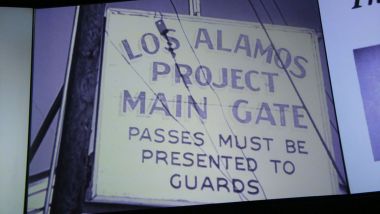
Jess Sand/Flickr
Confusion and ambiguity but no relief
Before being fired, Doyle lodged several complaints about his treatment with ethics officers at the lab and the Energy Department, without any success.
In Sept. 2013, David Clark, program director of the lab’s National Security Education Center, wrote in a 5-page report for its research integrity office that did not mention Doyle by name — but clearly addressed his case — that he had examined whether the lab had used classification policy “to suppress his views on nuclear weapons policy” and later retaliated for his protests by withdrawing his security clearances.
In his report, Clark concluded the employee in question had followed the rules and acted “in good faith.” He also wrote that the lab’s policies regarding privately-conducted work were unclear and that enforcement of classification guidelines was marked by poor training and the absence of consensus. For Los Alamos employees, Clark wrote, “this is an unacceptable situation.”
But Clark also concluded that those who felt the article in question contained classified information “were all acting in good faith” and so he found “no evidence of infringement of intellectual freedom.” His opinion did not detail how he reached this conclusion, but recommended that in the future the laboratory make clearer to its employees that anything they write as private citizens must be submitted for classification review if it relates to their lab work.
The director of DOE’s Classification Office in Washington, Andrew Weston-Dawkes, also turned Doyle’s appeal aside, ruling instead that Gerth had reasonably decided the Survival article was classified. Weston-Dawkes, who has been in the office for the past 20 years, further warned that anytime a lab employee is identified as such in any publication — even a privately-written one — “it is inferred to express the knowledge gained as a cleared Government employee” and thus needs review.
Doyle’s complaint was also reviewed by the State Department’s classification office, which affirmed that the Survival article contained classified information pertaining to national security. (The department has no jurisdiction over atomic energy secrets.)
A State Department spokesman did not respond to repeated requests for comment on the case. But Gibbs, in the interview, noted that the material at issue was the subject of a “long-standing disagreement” within the government over whether it should be considered classified.
“I certainly don’t see any classified or even sensitive information in this article,” said Steve Fetter, a nuclear physicist and associate provost at the University of Maryland who served in the White House Office of Science and Technology Policy during President Obama’s first term. “I can only imagine that Doyle is being punished for the policy views that he espouses.”
Doyle also filed a complaint with a whistleblower protection office at the National Nuclear Security Administration, which funds and oversees the labs, claiming that the lab had broken the law by retaliating against him for protesting the article’s retroactive classification.
His complaint was summarily dismissed by NNSA, and when he appealed to the Energy Department’s Hearings and Appeal Office, director Poli A. Marmolejos ruled in June this year that Doyle’s case didn’t meet the department’s standard for whistleblowers.
To qualify for special protection, Marmolejos wrote, Doyle would have to have disclosed “substantial” law-breaking by the lab. “In our view, a debatable assertion that an official misapplied classification guidance does not rise to the level of disclosing a ‘substantial violation’ of a law, rule or regulation,” Marmolejos wrote.
Doyle’s lawyer, Mark Zaid, said that the decision was an example of how the executive branch agencies don’t take the manipulation of classification rules as seriously as they should. “Misclassifying information… is clearly a violation of a rule, law or regulation to me. It goes to the heart of our system,” Zaid said. Marmolejos referred requests for comment to the public affairs office.
Clark’s report, however, makes clear that both Los Alamos and the Energy Department have had difficulties following classification guidelines. He said that the lab had declared another article was unclassified that DOE said was classified, after its publication. “The subject area in question is subjective and ambiguous,” he wrote.
Doyle said he is not certain where he will end up, though he plans to continue to work on nonproliferation and disarmament issues. “I pursued a career in national security with the motivation of improving the national security policy of my country,” he said. “And there’s nothing conflicting in advocating the elimination of nuclear weapons and maintaining the security of the United States.”
Managing editor for national security R. Jeffrey Smith contributed to this article.
Read more in National Security
National Security
Growing number of biosafety labs raises public health concern
Number of facilities has grown since 2001 anthrax attacks
National Security
Russian gas company hires D.C. lobbyists
Major shareholder is part of Putin’s ‘inner circle’

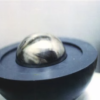
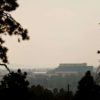
Join the conversation
Show Comments